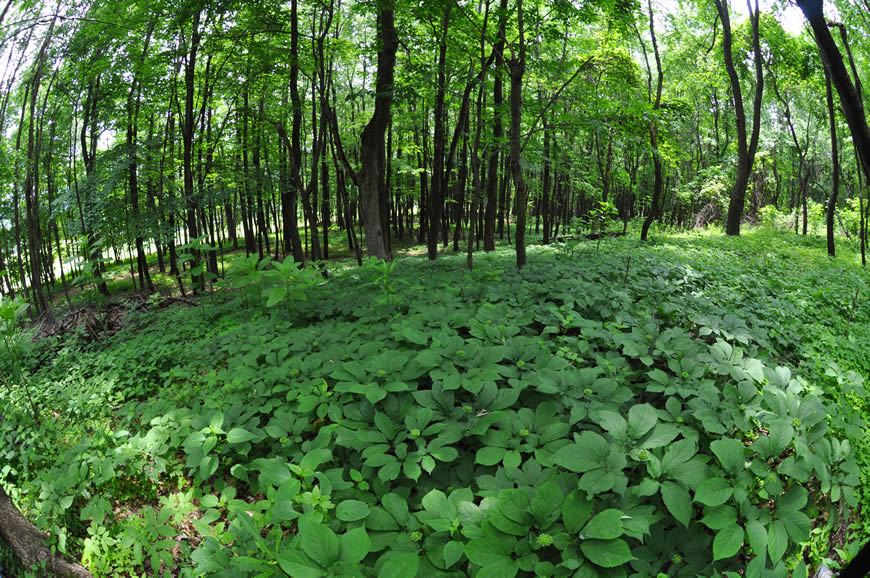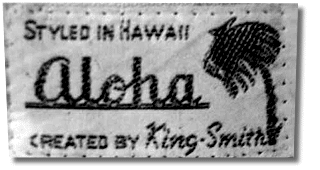King Kamehameha III established the office of the Marshal of the Hawaiian Islands on April 27, 1846. By 1859, the Marshal was designated the Chief of Police of the Kingdom, and he remained as such through the Republic and Territorial periods. During the last period he was known as the High Sheriff.
The island sheriffs, whose offices also originated in 1846, were his subordinates until 1905, when their offices were incorporated into the newly-established county governments. The Marshal was responsible for nominating to the island governors persons to be appointed by the governors as island sheriffs. (HSA)
Among other things, the Marshal was responsible for instructing the island sheriffs in their duties, as executive officers of the courts of record, as conservators of the peace, as trustees of jails, prisons and places of public correction, as safekeepers of prisoners, as executors or criminal sentences …
… as the executors of executive mandates issued by the King, island governors or executive department heads, as commanders of the civil posse, as the apprehenders of fugitives from justice, including deserters from ships, as the detectors of crimes and misdemeanors, and as coroners.
The sheriffs were subordinate to the island governors, were permitted to appoint deputies and were accountable for all escapes and unnecessarily harsh treatment of prisoners. (HSA)
With the Organic Act of 1900, Congress transferred Hawaii’s sovereignty to the United States, making it a US territory, and defined its territorial government. Hawaii would have an appointed governor, a judiciary, and a bicameral legislature with popularly elected senators and representatives. (US Capitol Visitor Center)
The Organic Act also renamed the Marshal as the High Sheriff and sustained the existing organization and functions of the police.
Act 39 of 1905 (the ‘County Act,’ effective July 1, 1905) established counties within the Territory of Hawaii. One result of this act was to place the island sheriffs within the county governments and subordinate to the respective boards of supervisors, rather than to the High Sheriff. (HSA)
The law was not without its critics, “To multiply offices and opportunities for politicians, and increase taxation in a diminutive territory that long ago was ridiculed by Mark Twain who likened the official machinery of Hawaii to that of the Great Eastern in a sardine box.” (Thrum, 1906)
At the same time, Act 41 of 1905 established boards of prison inspectors for each judicial circuit, and made the boards responsible for jails and prisons within their circuits.
The High Sheriff was made responsible to the Board of Prison Inspectors of the First Judicial Circuit for Oahu Prison, and he was potentially responsible to other boards for territorial-level prison facilities in other circuits.
The High Sheriff was de facto Warden of Oahu Prison, and he was indexed as such in the Revised Laws of Hawaii, 1925, although he was never designated as such by statute.
That situation was changed by Act 17, 1st Special Session, 1932, which created a separate office of Warden of Oahu Prison and removed from the High Sheriff the responsibility for territorial prisons and prisoners. (HSA)
Then, the legislature started authorizing county Police Commissions. A police commission was set up in Honolulu in 1932; Maui was given a police commission in 1939.
Kauai was technically authorized next, before Hawaii County; on April 19, 1943 the legislature approved a Kauai police commission and on April 21, 1943 they approved a Hawaii County Police Commission. (HTH, April 21, 1943)
C&C Honolulu
In the late 1920s and early 1930s crime was on the rise in Honolulu. Due to increased pressure from a group of prominent women in the community Governor Lawrence M. Judd appointed a Governor’s Advisory Committee on Crime.
This committee recommended that “there should be a police commission appointed by the Mayor of the City and County of Honolulu, with the approval of the Board of Supervisors …”
“… whose duty it would be to appoint a Chief of Police and to supervise the operating of the police department” and that “the office of the Sheriff be retained and that the Sheriff be charged with the duty of serving civil process, maintaining the Honolulu Jail, and to act as Coroner.”
Governor Judd convened a Special Session of the Legislature and on January 22, 1932, it passed Act 1, carrying out the recommendations by the Governor’s Advisory Committee on Crime.
Act 1 established the Honolulu Police Commission and provided for an appointed Chief of Police. The Commission immediately appointed businessman Charles F Weeber to be the first Chief of Police. (Hnl PD)
Maui County
In 1939, several actions happened legislatively for Maui, “The laws making the island of Lanai a new district in Maui County and authorizing creation of new jobs for that district, as well as the act setting up a Maui police commission were … milestones in county legislation.” (SB, May 27, 1939)
In addition, legislation created a “Maui police commission of five members appointed by the governor; alteration of the whole Maui police system to conform with the new police commission law; creation of the office of police chief and abolition of the sheriff’s office.” (SB, May 27, 1939)
Then, “George F Larsen Jr, captain of detectives, Honolulu police department, was appointed as the new Maui chief of police by the Maui police commission”. (SB, June 27, 1939)
Kauai County
Following the authorization of a police commission on Kauai (and the Big Island), “Sheriffs and deputy sheriffs now serving in Hawaii and Kauai counties will be eliminated as soon as the new commission is appointed.” (SB, May 25, 1943)
“Members of the [Kauai] commission, appointed by the governor are: Caleb Burns Jr, for a term to expire June 30, 1947; former senator Charles A Rice, for a term to expire on June 30, 1948; Sinclair Robinson, for a term to expire June 30, 1949 and John F Ramsey, for a term to expire June 30, 1946.” (HTH, June 26, 1943)
Governor Stainback also appointed Joseph S Jerves for a term that ran to June 30, 1945. Charles A Rice was elected chairman of the board.
“Edwin K Crowell, Kauai sheriff, was appointed the Garden Island’s first chief of police by the unanimous vote of the new Kauai police commission at its organization meeting in the county building.” (SB July 1, 1943)
Hawaii County
On June 11, 1943, Governor Ingram M Stainback announced the appointment of the Hawaii County Police Commission; this included Willis C Jenning, manager of Hakalau Plantation, who had been designated as chairman.
Other initial commissioners were Carl E Hanson, manager of the Hilo branch of Bishop National Bank; Nicholas Lycurgus, manager of the Volcano House; Thomas Strathairn, manager of the Hilo office of the Inter-Island Steam Navigation Co and the Hilo office of Hawaiian Airlines; and Robert L Hind, head of Puuwaawaa Ranch. (HnlAdv, June 11, 1943)
On June 24, 1943, it was reported that George F Larsen Jr, chief of police of Maui county (who had been Maui Chief since 1939, and prior to that was captain of detectives in Honolulu), had been appointed chief of police of Hawaii county by the recently appointed Big Island police commission. (SB, June 24, 1943)
The High Sheriff continued as the Chief of Police of the Territory, responsible for the public peace, the arrest of fugitives, etc., until 1959, when his office was abolished by Act 1, 2nd Special Session, 1959 (the “Reorganization Act”). (HSA)


























